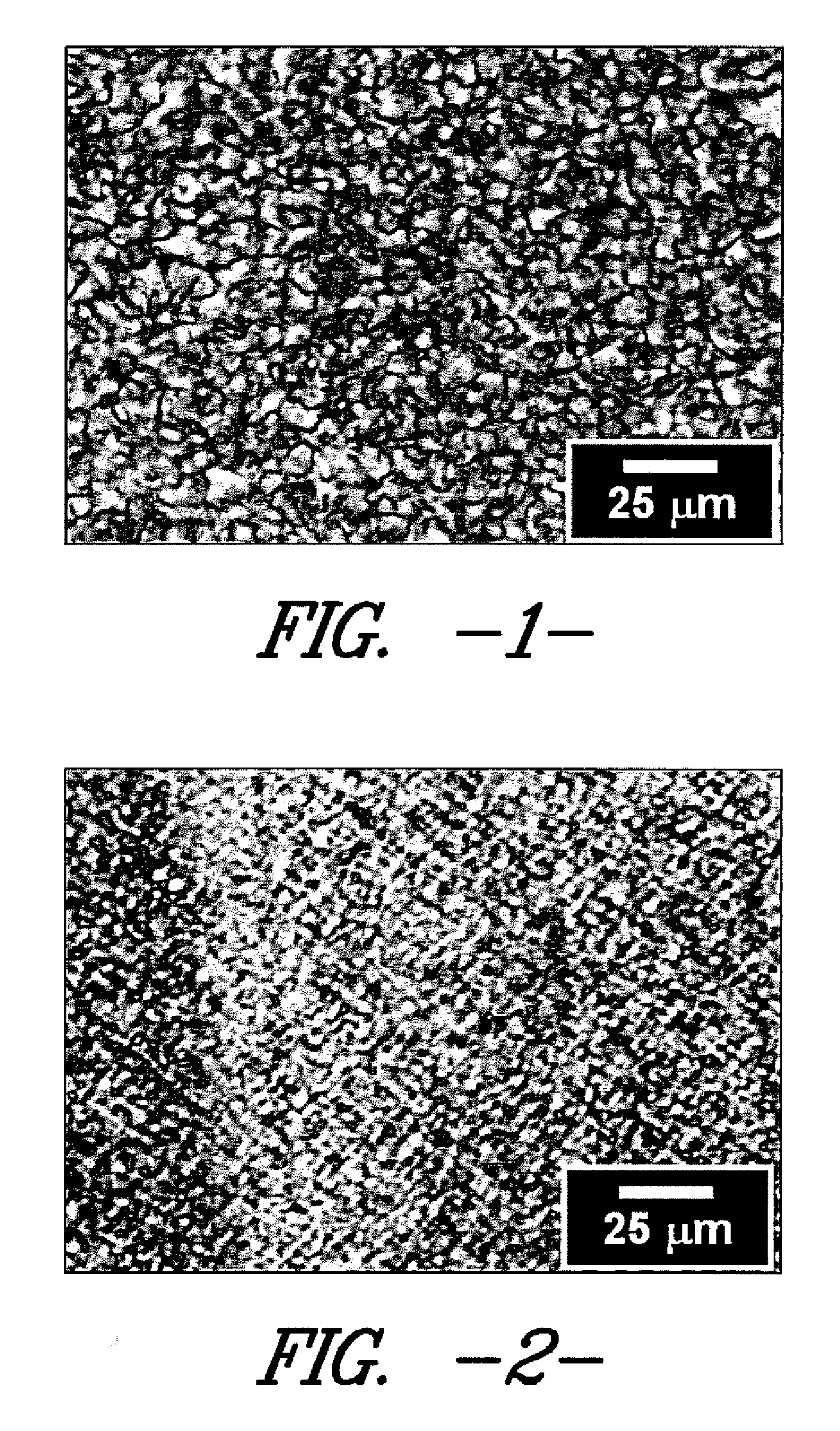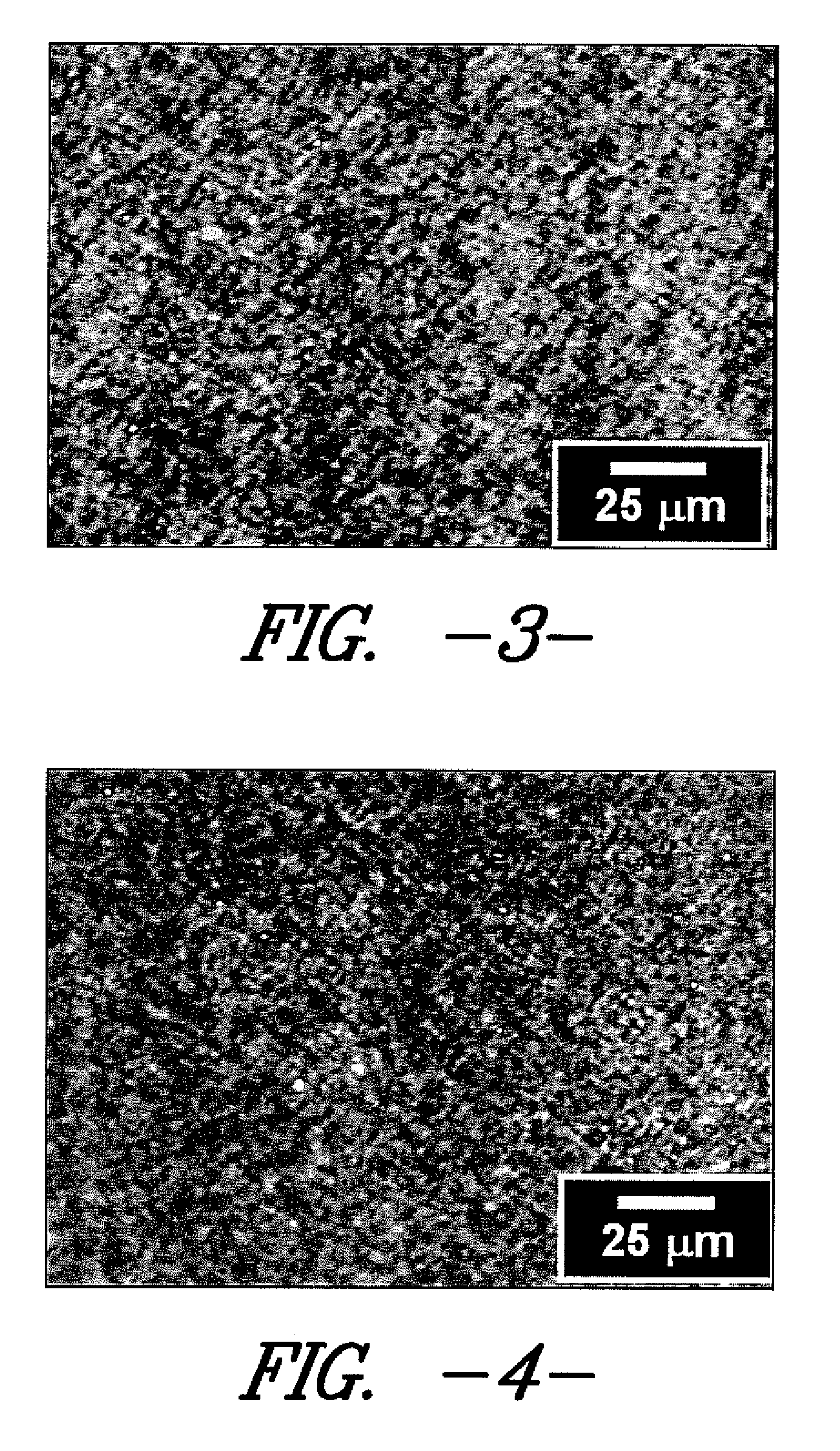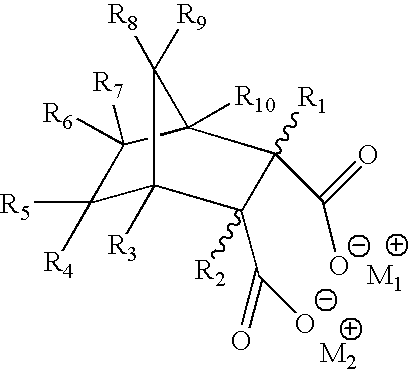Polymer compositions comprising nucleating or clarifying agents and articles made using such compositions
a technology of compositions, which is applied in the field of polymer compositions comprising nucleating or clarifying agents, can solve the problems of not being able to predict the success of using the same formula in another type of processing technique, and not being able to predict the success of any particular formulation used in one type of processing
- Summary
- Abstract
- Description
- Claims
- Application Information
AI Technical Summary
Problems solved by technology
Method used
Image
Examples
example 1
[0053] This example demonstrates the changes in thermal and optical properties exhibited by the polymer compositions described herein. Four samples (1A-1D) were prepared using four commercially available polyethylene resins compounded with approximately 2.0% by weight (based on the total weight of the polymer composition) of a masterbatch containing approximately 10% by weight (based on the total weight of the masterbatch) of a commercially available 1,3:2,4-bis(3,4-dimethylbenzylidene) sorbitol nucleating agent (MILLAD® 3988 available from Milliken Chemical) and approximately 90% by weight (based on the total weight of the masterbatch) of random copolymer polypropylene. Thus, each of the compounded polymer compositions comprised 0.2% by weight of the 1,3:2,4-bis(3,4-dimethylbenzylidene) sorbitol nucleating agent and 1.8% by weight of the random copolymer polypropylene.
[0054] The compounded samples were injection molded into 50 mil plaques using an Arburg 40-ton injection-molding m...
example 2
Manufacture of Cups
[0057] A series of cups with an average weight of approximately 20 g and a nominal wall thickness of 25 mils (0.025 inch) were produced using a Husky S-90 injection molding machine. The polymer compositions used to produce the samples contained approximately 2% by weight (based on the total weight of the composition) of the masterbatch described in Example 1 along with 2% by weight of masterbatches described in Example 9.
example 3
[0058] A third set of cups (Samples 3A-3B) were produced by the same method as in Example 2. The polymer compositions used to produce the cups included a control (Sample 3A) comprising a commercially available HDPE resin and a polymer composition according to the invention (Sample 3B) comprising the same HDPE resin and 2.5% by weight (based to the total weight of the polymer composition) of a masterbatch comprising 4% by weight (based on the total weight of the masterbatch) of a commercially available disodium bicyclo[2.2.1]heptane-2,3-dicarboxylate nucleating agent (HYPERFORM® HPN-68L available from Milliken Chemical) and 96% by weight of a homopolymer polypropylene.
[0059] After at least 12 hours of storage, the samples were evaluated to determine haze and clarity using a BYK Gardner Haze-Gard Plus.
TABLE 4Optical properties of Samples 3A-3B.SampleHaze (%)Clarity (%)3A94.567.63B56.497.7
[0060] As can be seen from the data set forth in Table 4, the cups produced using the polymer c...
PUM
| Property | Measurement | Unit |
|---|---|---|
| density | aaaaa | aaaaa |
| thickness | aaaaa | aaaaa |
| weight | aaaaa | aaaaa |
Abstract
Description
Claims
Application Information
 Login to View More
Login to View More - R&D
- Intellectual Property
- Life Sciences
- Materials
- Tech Scout
- Unparalleled Data Quality
- Higher Quality Content
- 60% Fewer Hallucinations
Browse by: Latest US Patents, China's latest patents, Technical Efficacy Thesaurus, Application Domain, Technology Topic, Popular Technical Reports.
© 2025 PatSnap. All rights reserved.Legal|Privacy policy|Modern Slavery Act Transparency Statement|Sitemap|About US| Contact US: help@patsnap.com



